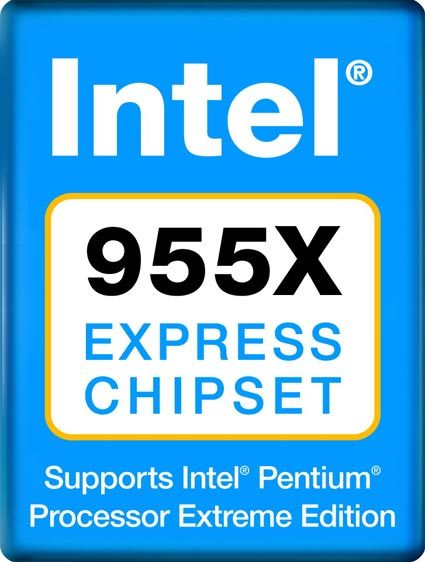Intel's 955X Dual-Core Chipset Better For Business Users Than NVidia's nForce4
More Of Everything: Intel 955X
Intel predicted that a new generation of chipsets would be ready precisely at mid-year, just in time to support a new generation of dual-core Pentium processors. Thus, the 945 succeeds the 915 at the same time that the 955X steps in to fill the 925XE's shoes. The technical enhancements aren't as dramatic as last year's hand-off, so we wanted to put the top-of-the-line 955X under the scope to see what we could learn.
Installing a dual-core Intel CPU requires one of these new chipsets, because they're the only ones that support the latest Pentium D and Pentium Extreme Edition processors. That said, both the 945P and 955X support the same CPUs. But you still have to figure that motherboards based on the 955X will meet the more demanding power and performance requirements of the Extreme Edition processor better - though they are also likely to cost more. But that also probably means that 955-based motherboards will resist obsolescence longer, and may have a better chance of accommodating upcoming CPUs as well.
The Pentium Extreme Edition's increased power requirements are contingent upon Hyper-Threading and led to a certain amount of confusion among hardware developers about 12V requirements. Intel also changed its specifications on short notice, after many motherboard vendors had already locked in their designs. Whatever problems this might poses for PC designers, 955-based motherboards demand hefty power supplies with lots of 12V amperage to drive them. Most such PSUs originated in the server and high-end workstation markets where they've long delivered lots of stable, clean power to the 5V and 12V rails. Worse yet, heavy-duty power supplies like these are quite expensive.
On paper, the 955X offers numerous capabilities that we wanted to investigate, coupled with the formidable challenges the design imposes on motherboard vendors. At first blush prior to our review, we saw numerous improvements worth digging into, including enhanced memory support, improved SATA controllers and RAID capabilities and a bump in the number of PCI-Express lines. Add to those capabilities the debut of Intel's Active Management Technology and you've got more than enough features to get excited about.
Get Tom's Hardware's best news and in-depth reviews, straight to your inbox.

Patrick Schmid was the editor-in-chief for Tom's Hardware from 2005 to 2006. He wrote numerous articles on a wide range of hardware topics, including storage, CPUs, and system builds.
